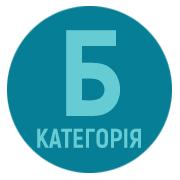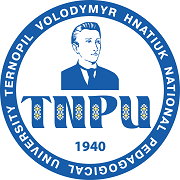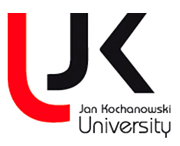INTEGRATION OF NEW LINGUISTIC AND CULTURAL CODES INTO THE LINGUISTIC PICTURE OF THE WORLD OF UKRAINIANS
DOI:
https://doi.org/10.32782/2307-1222.2024-58-25Keywords:
associative background, world picture, connotation, lingucultural code, linguculturalism, linguculturalization, meaning.Abstract
The article examines the problem of closedness/openness of classes by linguistic culture. There is an established tendency to replenish the linguistic and cultural space with new linguistic cultures. The key sources of linguistic and cultural units that emerged during the last hundred years are defined as the vernacular and the socio-cultural background. Chronologically, the period from ancient times to modern times is represented in the survey. Semantic and thematic classification of units based on their meaning, markedness and functional optionality, as well as distribution according to chronological boundaries to which linguocultures are referred, and the main spheres of human activity were carried out. Six semantic and thematic groups are distinguished by linguistic culture. Names of persons and famous figures, names of literary and song works, and names of loci (cities and towns of Ukraine that have undergone reactualization) are recognized as the most productive classes. Separately, as a linguistic and cultural group, markers – verbalizers of war in connection with the stability of their reproduction, anchored in speech, structural design and non-equivalence in relation to other linguistic and cultural spaces. The autonomy of semantic and thematic groups by linguistic culture is established, and at the same time, the interaction between different classes of units is recorded. The functional potential of the new and newest linguistic and cultural units is outlined primarily through culture-creating (forming the cultural background of the people), axiological (due to the preservation of cultural meaning) and cumulative (due to the accumulative property) functions. Accompanying functions are ethnocultural, image-creative and text-creative. Other features of linguistic and cultural units are singled out, such as precedent and intertextuality, as a result of which the recipient is referred to phenomena and events that are intrinsically correlated with the specified linguistic and cultural theme; the ability to act as material for occasional interpretations (while preserving the main essence embedded in the unit); the possibility of decoding in a transformed form; creation of a stable associative background, a variety of connotations (from positive to negative) and their transformation over several years; the ability to reactualize and fix in the minds of speakers through audio, video, text and graphic information.
References
Артемова Ю. Історія становлення та розвиток лінгвокультурології в контексті зміни лінгвістичних парадигм. Наукові записки Вінницького державного педагогічного університету ім. Михайла Коцюбинського. Серія «Філологія (мовознавство)». 2017. Вип. 25. С. 20–28. URL: http://nbuv.gov.ua/UJRN/Nzvdpu_filol_2017_25_5.
Мацько Л. Лінгвокультурологічний аналіз художнього тексту. Культура слова. 2011. № 75. С. 56–66. URL: http://dspace.nbuv.gov.ua/bitstream/handle/123456789/37180/09-Macko.pdf?sequence=1.
Медвідь Н. Лінгвокультуреми в українській соціально-психологічній прозі першої половини ХХ ст. : автореф. дис. … канд. філол. наук : 10.02.01 ;
Національний педагогічний університет імені М.П. Драгоманова. Київ, 2009. URL: http://enpuir.npu.edu.ua/handle/123456789/101.
Петькун С. Мова як складова людської культури в умовах світової глобалізації. Наука. Релігія. Суспільство. 2012. № 1. С. 97–101. URL: http://dspace.nbuv.gov.ua/bitstream/handle/123456789/86819/16Petkun.pdf?sequence=1.
Ясногурська Л. Концептосфера зрада у зіставно-типологічному та лінгвокультурологічному висвітленні (на матеріалі української та англійської мов). Наукові записки Національного університету «Острозька академія». Серія «Філологічна». 2017. № 64 (2). С. 216–219. URL: http://nbuv.gov.ua/UJRN/Nznuoaf_2017_64(2)__79.
Голікова Н. Лінгвокультурема «Маруся Чурай» в українській літературі ХІХ–ХХ ст. Культура слова. 2020. № 92. С. 36–51. URL: http://nbuv.gov.ua/UJRN/Kuls_2020_92_5.
Дюкар К., Пономаренко О. Структурно-семантична організація неодериватів, зафіксованих в українськомовному медіапросторі від початку повномасштабного вторгнення Росії в Україну. Закарпатські філологічні студії. 2023. Т. 1. № 28. С. 46–50. DOI: https://doi.org/10.32782/tps2663-4880/2023.28.1.8.










